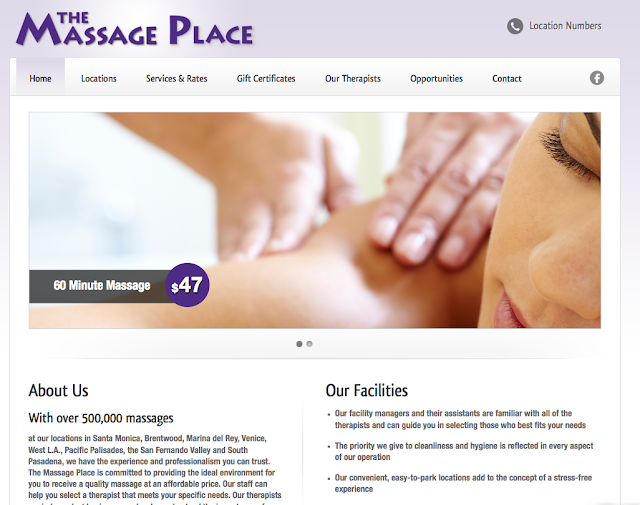I travel
back and forth from LA to New York on a regular basis and have had many friends
on both coasts complain about the $47. massage.
My
experience is that the going rate for a massage is around $60. or more for an
hour. I think the American standard is set by those one-hundred thousand plus
skin and nail care salons that are scattered across our great nation. When I go
to mine, I am encouraged to run up the bill one minute at a time. An extra ten-minute
foot, hand or shoulder massage is always tracked by the little egg timer… a
dollar per minute.
Several months
back, I was taken by a sign outside “The Massage Place” that read $47. massage.
“The Massage Place” is a west coast
company offering this proposition. I’m no fool. I know a bargain when I see it.
I called, confirmed the $47. one-hour massage and booked it.
When I
arrived, the place was busy and I was asked to wait for a few minutes. While
doing so, I did not notice a very small sign in a frame on the front desk. That
little sign became relevant an hour later.
I was
called soon, introduced to my massage therapist and received a very good
massage. Upon completion, the massage therapist thanked me then left the room.
I dressed and as I did, I noticed a large sign on the wall next to the door
that recommended I tip the massage therapist $20. I got the impression that I
had just rented the room from the “The Massage Place” and now needed to
compensate the massage therapist separately. I did the math. Forty-seven and
twenty are sixty-seven which is no bargain. I felt duped. And yes, this is what
the little sign in the lobby was all about.
This is not
the old Bait and Switch. That is where they simply trade you up to something
more expensive. This was close. This is a clever twist on it to be sure and is
what my friends were complaining about.
So, ask
yourself. Is this cheating? Is it an unfair trade practice? Should something be
done?
I say no. It’s
really smart marketing and I love it. These people have stimulated the massage
category with a simple change to the Selling Proposition. I do it all the time.
As a
consumer, I am an incurable early adaptor and I always go for the deal. Even
knowing I had encountered the age old “if it’s too good to be true” pitch, I
still went for it. I love watching Locked
Up Abroad on TV and am always blown away with the total disregard for a
little scrutiny even when faced with a prison term in a foreign country.
My hat is
off to the folks at “The Massage Place” for rejuvenating the massage
category…our economy needs the boost.
The
learning here is to take a good look at your sales message to see where you can
rework it to make it appear Remarkable to your target consumer.
Cheers,
Keith Chambers
Keynote Marketing Speaker
Creative Marketing Consultant
(310) 473-0010
www.chambersgroup.com
Keynote Marketing Speaker
Creative Marketing Consultant
(310) 473-0010
www.chambersgroup.com
follow my blog by clicking one of the links below

















